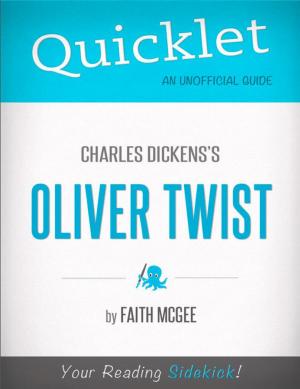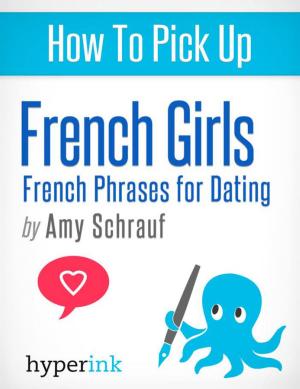Quicklet on Suzanne Collins' Catching Fire (CliffNotes-like Book Summary and Analysis)
Nonfiction, Reference & Language, Study Aids, Book Notes, Fiction & Literature, Literary Theory & Criticism| Author: | Stephanie Seales | ISBN: | 9781614646303 |
| Publisher: | Hyperink | Publication: | July 30, 2012 |
| Imprint: | Hyperink | Language: | English |
| Author: | Stephanie Seales |
| ISBN: | 9781614646303 |
| Publisher: | Hyperink |
| Publication: | July 30, 2012 |
| Imprint: | Hyperink |
| Language: | English |
ABOUT THE BOOK
The Hunger Games, Catching Fire, and Mockingjay, the three books that comprise The Hunger Games Trilogy, have more than 26 million copies in print, topping bestseller lists, and have captured the nation’s attention. Catching Fire, the eagerly awaited sequel to Suzanne Collins’ 2008, The Hunger Games, was published September 1, 2009, with an initial printing of 350,000 books. There are now more than 750,000 copies of Catching Fire in print. With the release of the movie version of The Hunger Games, and the forthcoming movie adaptation of both Catching Fire and Mockingjay, the cultural relevance of these books is poised to skyrocket.
What many people do not know about The Hunger Games books is that the series comes from a long line of ancestors. While other dystopias like 1984 andFarenheit 451 may immediately spring to mind, there are other, older works which served as an inspiration for the series. Suzanne Collins cites the Greek myth, Theseus and the Minotaur, and the story of Spartacus as influencing her stories. The actual idea for the Hunger Games trilogy came to Collins as she flipped channels between reality TV and actual coverage of the war in Afghanistan. That tension, the line between what is seen on screen and what is real, is clear throughout the series.
The Hunger Games books are the third children’s, and second YA (young adult) book series in recent years to capture a large child, teen, and adult audience (with the Harry Potter series and the Twilight quartet preceding). To understand the wide appeal of the Hunger Games books, we can look the issues the books grapple with. Ignoring the conventions of what topics are appropriate in children’s literature, Collins’ trilogy examines taboo subjects like the ethics of war, PTSD (Posttraumatic Stress Disorder), extreme poverty, starvation, and systematic oppression. Collins’ does not flinch from exploring these issues with her audience and that openness that has brought the books an impressively diverse readership.
EXCERPT FROM THE BOOK
Chapters 19–27
Being an experienced swimmer, Katniss is one of the first to reach the Cornucopia. There she nearly attacks Finnick but sees him wearing Finnick’s bracelet—a clear indication that she is to ally with him. Finnick retrieves Peeta (who cannot swim) and together with Mags they enter the jungle. It doesn’t take Katniss long to identify the force field at the edge of the arena and recognize that the arena is round. When a deadly fog begins to cause them to affect their nerves, Peeta is unable to walk. Finnick carries him and Katniss carries Mags, but when Katniss and Finnick grow too numbed by the fog to carry both Peeta and Mags, Mags walks into the fog, effectively killing herself.
Eventually the fog recedes and Katniss discovers saltwater leeches the poison left by the fog. Later, when they are all recovered, Peeta is attacked by savage monkeys and one of the District 6 morphlings saves him, dying in his place. Johanna Mason along with Beetee and Wiress join the alliance. Wiress, who appears mentally unstable, continues to repeat “Tick Tock”. Her words appear to have no meaning until they lead to Katniss’ realization that the arena is a clock with each “hour” section holding a new horror. The next day they go back to the Cornucopia where they are attacked by the Careers. Wiress is killed and Finnick takes a knife in order to deflect a spear aimed at Peeta. At this point, Katniss realizes the other tributes are sacrificing themselves to ensure Peeta’s safety and assumes it is an extension of Haymitch’s promise to her...
...buy the book to keep reading!
ABOUT THE BOOK
The Hunger Games, Catching Fire, and Mockingjay, the three books that comprise The Hunger Games Trilogy, have more than 26 million copies in print, topping bestseller lists, and have captured the nation’s attention. Catching Fire, the eagerly awaited sequel to Suzanne Collins’ 2008, The Hunger Games, was published September 1, 2009, with an initial printing of 350,000 books. There are now more than 750,000 copies of Catching Fire in print. With the release of the movie version of The Hunger Games, and the forthcoming movie adaptation of both Catching Fire and Mockingjay, the cultural relevance of these books is poised to skyrocket.
What many people do not know about The Hunger Games books is that the series comes from a long line of ancestors. While other dystopias like 1984 andFarenheit 451 may immediately spring to mind, there are other, older works which served as an inspiration for the series. Suzanne Collins cites the Greek myth, Theseus and the Minotaur, and the story of Spartacus as influencing her stories. The actual idea for the Hunger Games trilogy came to Collins as she flipped channels between reality TV and actual coverage of the war in Afghanistan. That tension, the line between what is seen on screen and what is real, is clear throughout the series.
The Hunger Games books are the third children’s, and second YA (young adult) book series in recent years to capture a large child, teen, and adult audience (with the Harry Potter series and the Twilight quartet preceding). To understand the wide appeal of the Hunger Games books, we can look the issues the books grapple with. Ignoring the conventions of what topics are appropriate in children’s literature, Collins’ trilogy examines taboo subjects like the ethics of war, PTSD (Posttraumatic Stress Disorder), extreme poverty, starvation, and systematic oppression. Collins’ does not flinch from exploring these issues with her audience and that openness that has brought the books an impressively diverse readership.
EXCERPT FROM THE BOOK
Chapters 19–27
Being an experienced swimmer, Katniss is one of the first to reach the Cornucopia. There she nearly attacks Finnick but sees him wearing Finnick’s bracelet—a clear indication that she is to ally with him. Finnick retrieves Peeta (who cannot swim) and together with Mags they enter the jungle. It doesn’t take Katniss long to identify the force field at the edge of the arena and recognize that the arena is round. When a deadly fog begins to cause them to affect their nerves, Peeta is unable to walk. Finnick carries him and Katniss carries Mags, but when Katniss and Finnick grow too numbed by the fog to carry both Peeta and Mags, Mags walks into the fog, effectively killing herself.
Eventually the fog recedes and Katniss discovers saltwater leeches the poison left by the fog. Later, when they are all recovered, Peeta is attacked by savage monkeys and one of the District 6 morphlings saves him, dying in his place. Johanna Mason along with Beetee and Wiress join the alliance. Wiress, who appears mentally unstable, continues to repeat “Tick Tock”. Her words appear to have no meaning until they lead to Katniss’ realization that the arena is a clock with each “hour” section holding a new horror. The next day they go back to the Cornucopia where they are attacked by the Careers. Wiress is killed and Finnick takes a knife in order to deflect a spear aimed at Peeta. At this point, Katniss realizes the other tributes are sacrificing themselves to ensure Peeta’s safety and assumes it is an extension of Haymitch’s promise to her...
...buy the book to keep reading!















